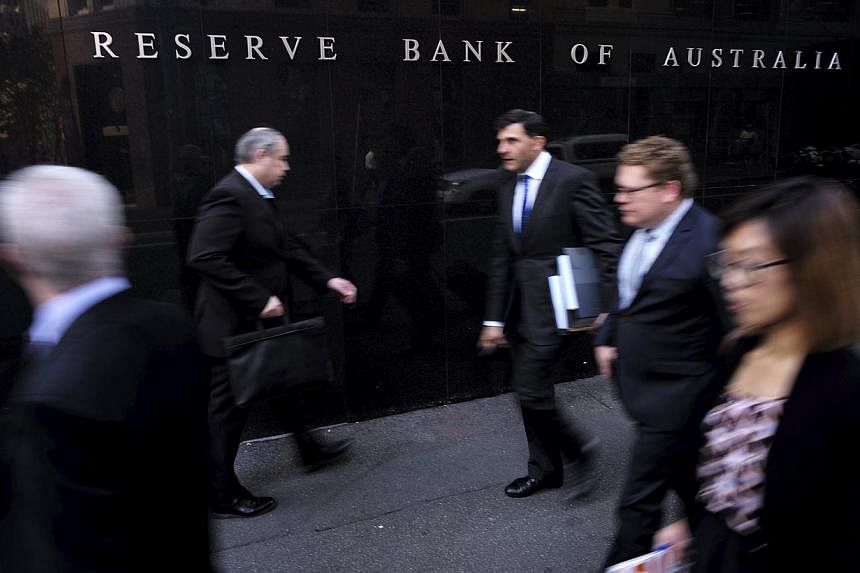SYDNEY (Reuters) - Australia's central bank left interest rates steady on Tuesday a month after cutting them to all-time lows, saying policy needed to be stimulative given sub-standard economic growth, a high currency and tame inflation.
The local dollar popped higher after the Reserve Bank of Australia (RBA) did not include an explicit bias to ease again, though it did pledge to weigh policy with an eye to coming economic news.
"(That) will inform the Board's assessment of the outlook and hence whether the current stance of policy will most effectively foster sustainable growth and inflation consistent with the target," said RBA Governor Glenn Stevens, in a typically guarded statement.
The decision was no surprise as a Reuters poll of 24 analysts had found all expected rates to remain at 2 percent this week, while eight still looked for another easing by year-end.
The central bank has already eased twice this year as the unwinding of a once-in-a-century mining boom carves a large hole out of business spending and national incomes.
Yet investors suspect the RBA may not be done yet. Interbank futures 0#YIB: imply a 50 percent probability of a move by October rising to 80 percent by Christmas. "We still say that there is an implied easing bias," said Michael Workman, a senior economist at CBA. "They can go with another rate cut if the Aussie dollar doesn't cooperate."
The need for stimulus should be evident when the Australian Bureau of Statistics releases its report on gross domestic product (GDP) on Wednesday.
Australia's A$1.6 trillion of GDP is expected to rise a moderate 0.7 per cent in the first quarter, while annual growth likely slowed further to 2.1 per cent.
While the economy has not suffered a full blown recession since 1991, it has been travelling below its ideal pace of around 3.25 per cent for much of the past six years. That has seen unemployment slowly rise to near-decade highs at 6.2 per cent, squeezing wages and household incomes.
Yet the hundreds of billions lavished on resource production is driving a sustained increase in export volumes, even as the price of many of those commodities has tumbled.
That is proving an invaluable support to activity as data on Tuesday showed net exports added half a percentage point to GDP last quarter, well above analysts' estimates.
Indeed, net exports alone likely accounted for more than half of all the growth in the year to March.
The RBA would like to further heighten this advantage via a lower currency and has openly invited markets to take it down. "Further depreciation seems both likely and necessary, particularly given the significant declines in key commodity prices," was Governor Stevens' view on Tuesday.

